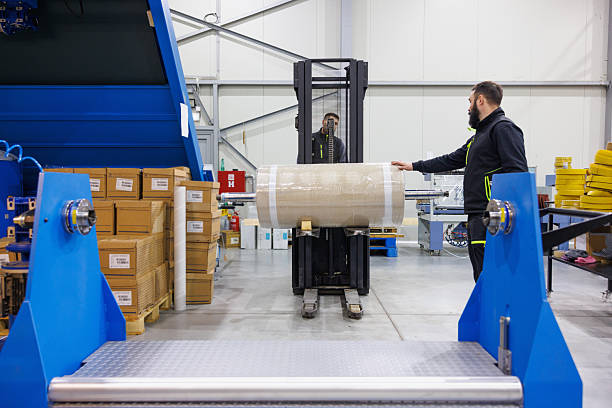In a time where logistics and supply chain management are vital to business operations, ensuring the safety of shipments those sensitive to temperature changes cannot be overlooked. Whether you’re dealing with pharmaceuticals, perishables, or moving valuable equipment, maintaining optimal conditions during transit is imperative.
Thermal protection plays a significant role in preserving product integrity and reducing losses caused by temperature fluctuations. Understanding the different types of thermal protection available and their applications can greatly enhance the security of your shipments.
Understanding Thermal Protection
Thermal protection refers to insulation and methods that maintain a stable temperature for transported goods. Many factors affect the condition of shipments, including ambient temperatures, the duration of transit, packaging materials, and temperature stability requirements. Selecting the right thermal protective measures ensures that goods remain within specified temperature ranges, mitigating the risks of spoilage or damage.
Thermal protection can take on various forms, from insulated containers and blankets to phase-change materials. Each method aims to minimize heat transfer, allowing sensitive items to preserve their desired conditions during transportation. Insulated thermal protection is Perfect for short duration shipments up to 48 hours because it effectively maintains temperatures while being manageable and cost-efficient. Understanding how thermal protection works is the first step in determining the best solutions for specific shipping needs.
Beyond short-term shipping, more complex logistics may require advanced thermal systems such as active cooling units or refrigerated transport to handle longer durations or extreme conditions. Businesses transporting pharmaceuticals, fresh produce, or chemicals rely heavily on these systems to comply with strict temperature regulations.
The Impact of Ambient Temperature
The temperature external to the packaging plays a significant role in the thermal behavior of shipments. During the summer months, temperatures can soar, which can lead to overheating of sensitive products. Conversely, during winter months, cold can lead to freezing or degradation of certain materials. Manufacturers, often mindful of these impacts, incorporate thermal protection in their shipping protocols to combat environmental hardships.
Pharmaceuticals like vaccines require strict temperature control to maintain efficacy. Without proper thermal protection, a product that requires refrigeration can quickly become ineffective if subjected to excessive warmth. Similarly, foods and other perishables can experience rapid spoilage if not properly insulated against environmental extremes.
Logistics managers must prepare for temperature fluctuations by investing in effective thermal protection strategies that account for the anticipated weather conditions throughout the shipping route.
Types of Thermal Protection Solutions
The marketplace offers various thermal protection solutions tailored to specific needs within the logistics sector. On one end of the spectrum, thermal blankets provide various levels of insulation based on material and design. Such products are generally lightweight yet effective in regulating temperatures during transit. They are particularly effective in reducing heat transfer when covering packages exposed to the elements.
Insulated shipping containers or boxes incorporate foam or thermal barriers into their construction, providing superior insulation for longer journeys. These containers are particularly suited to transporting temperature-sensitive items over extended distances. The choice of thermal solution often depends on shipment duration, type of goods being shipped, and budget considerations.
Cost-Benefit Analysis
Incorporating thermal protection measures may initially seem like an added expense for businesses looking to streamline operations. However, when evaluating the potential cost of product spoilage, regulatory fines for non-compliance, and the loss of customer trust due to compromised goods, investing in thermal solutions proves more favorable.
Studies indicate that businesses that proactively implement thermal protection strategies see substantial reductions in product loss due to temperature-related issues. Creating a reputation for reliability attracts and retains clients. The return on investment from thermal protection is significant, particularly in regulated industries like pharmaceuticals or food and beverages.
Regulatory Compliance and Standards
Many industries are governed by strict regulations that necessitate maintaining specific temperature ranges throughout the shipping process. For instance, the pharmaceutical sector is under stringent oversight requiring products to remain within designated temperature limits to ensure efficacy and safety. Failing to comply can lead to serious ramifications, both legally and economically.
To ensure compliance, businesses must stay updated on the latest standards and best practices concerning thermal shipping. Using recognized thermal protection solutions can help companies prove their commitment to safety standards and significantly reduce liabilities related to non-compliance. Long-term, organizations that prioritize adherence to thermal protection regulations stand to cultivate trust among stakeholders, customers, and regulatory agencies.
Future Trends in Thermal Protection
The demand for enhanced thermal solutions continues to escalate, driven by industry needs and technological advancements. New materials and innovative designs are being developed, allowing for more efficient insulation with reduced weight and bulk. Smart containers with temperature sensors offer real-time data to shippers, allowing proactive intervention if temperature deviations occur.
Emerging technologies, such as biodegradable thermal solutions, are making waves as companies strive for sustainability while maintaining product integrity. These advancements will play a critical role in shaping thermal protection’s future in a rapidly evolving logistics landscape. Embracing these technologies can lead to superior outcomes for companies committed to protecting their shipments.
As businesses continue navigating complex supply chains, the importance of thermal protection will only increase. Proper measures safeguard valuable shipments and enhance customer confidence and satisfaction. Understanding the nuances of thermal protection, from types and costs to compliance and future developments, prepares businesses to thrive in an increasingly competitive field.
Published by HOLR Magazine.




